Malaysia spans approximately 1,300 km (808 miles) from north to south and 800 km (497 miles) from west to east, covering around 330,803 km² (127,724) square miles. This is about the same size as Finland, Norway, and Vietnam. It is slightly bigger than New Mexico in the USA and Victoria in Australia. Getting around can involve flying, driving or using the train system. Riding the rails is my focus today.
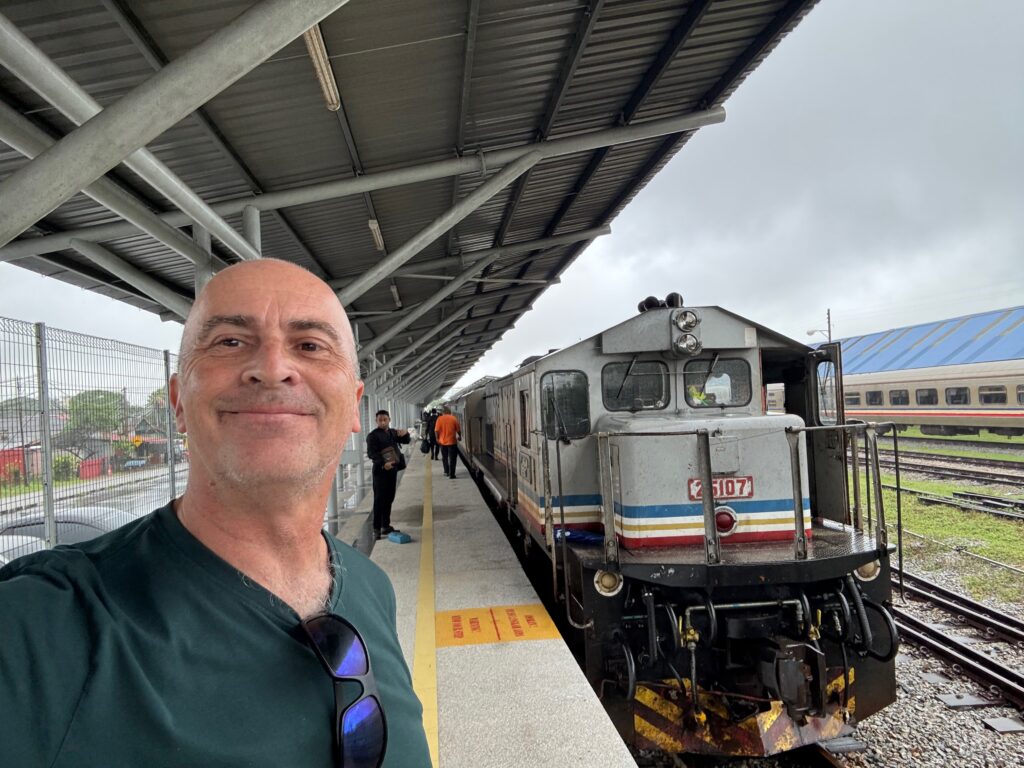
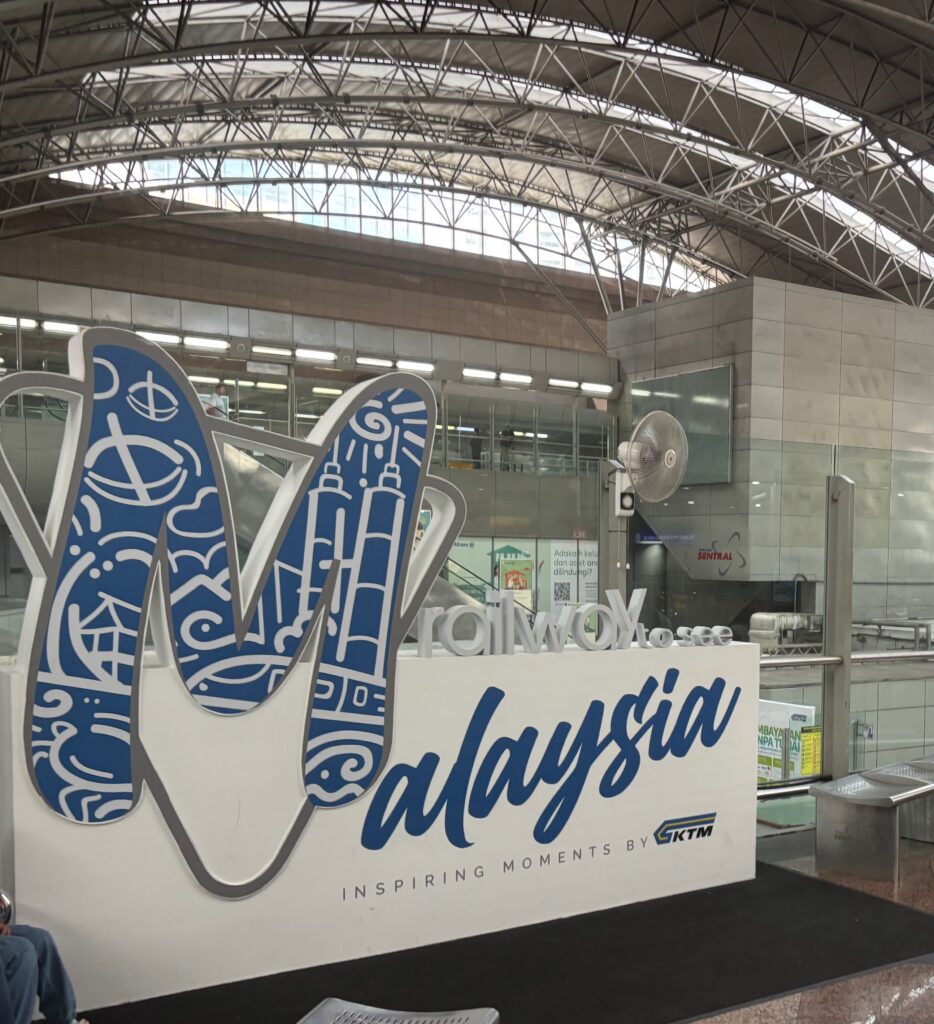
Malaysia’s transport network consists of three key components:
1. West Coast Line from Johor Bahru/Woodlands in the south to Padang Besar on Thai border (red line)
2 East Coast line from Gemas to Tumpat, near the northeastern coast (blue line)
3 The Urban and Suburban Rail Systems of Kuala Lumpur (the square box and the orange line)
I outline all these below.
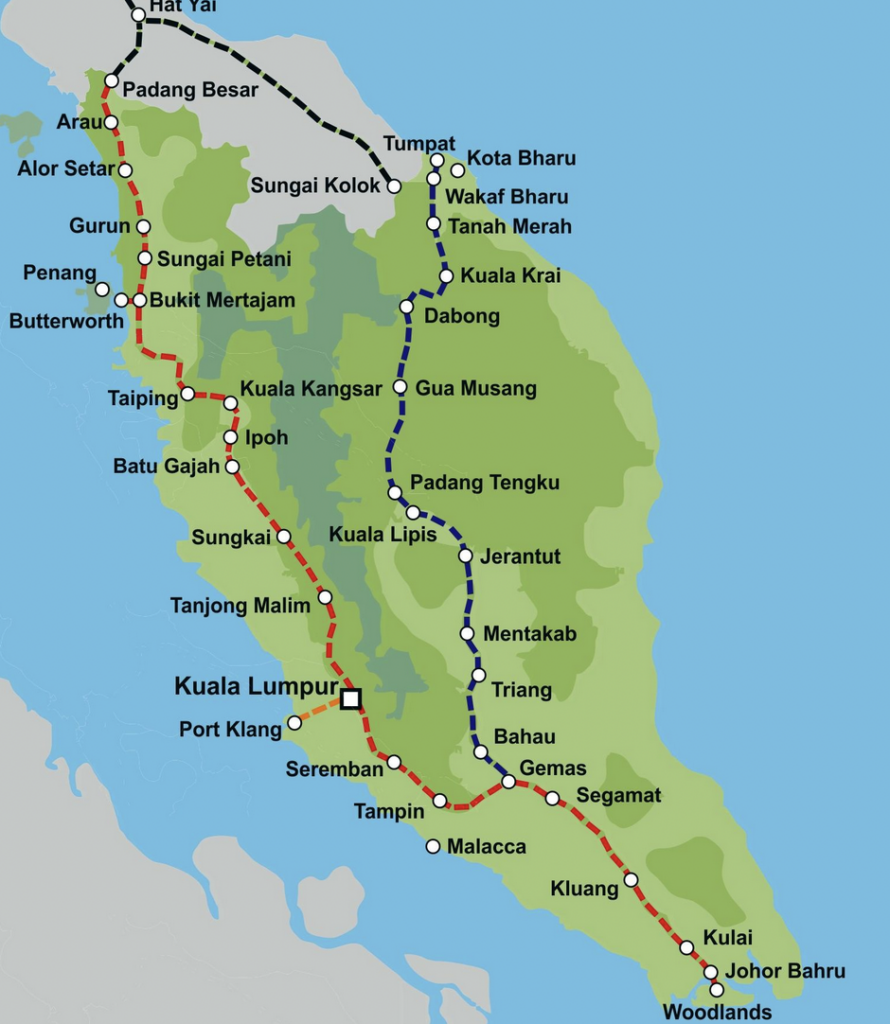
1. West Coast Line
The West Coast Line serves as Malaysia’s primary intercity and freight route. It connects the following major centres:
- Johor Bahru: A bustling city at Malaysia’s southern tip, Johor Bahru is the key gateway for Singapore. Legoland is located here.
- Tampin: closest access point to Malacca. The 35 km Tampin–Malacca line, built in 1904, was dismantled in World War II and never rebuilt.
- Gemas: a switching point for the East and West Coast Lines.
- Kuala Lumpur is Malaysia’s capital city and a hub of culture, commerce, and transit.
- Ipoh: gateway to the Cameron Highlands, known for its heritage architecture and local delicacies.
- Butterworth: The gateway to Penang, with easy access to Georgetown via ferry.
- Padang Besar: The border connection with Thailand. From Padang Besar Station, passengers can catch trains into the southern rail network of Thailand.
Historically, the West Coast Line originated in Singapore, with the old Tanjong Pagar Railway Station serving as the southern terminus. In 2011, the station ceased operations, and rail services were truncated to Woodlands. Today, the Woodlands Train Checkpoint is the official southernmost rail station in the KTM network. From Woodlands, passengers can transfer to the Singapore MRT system. I once rode a sleeper train from Singapore to Kuala Lumpur before the line was closed. Today, you can walk the remnants of the old rail line in Singapore, which I have also done.
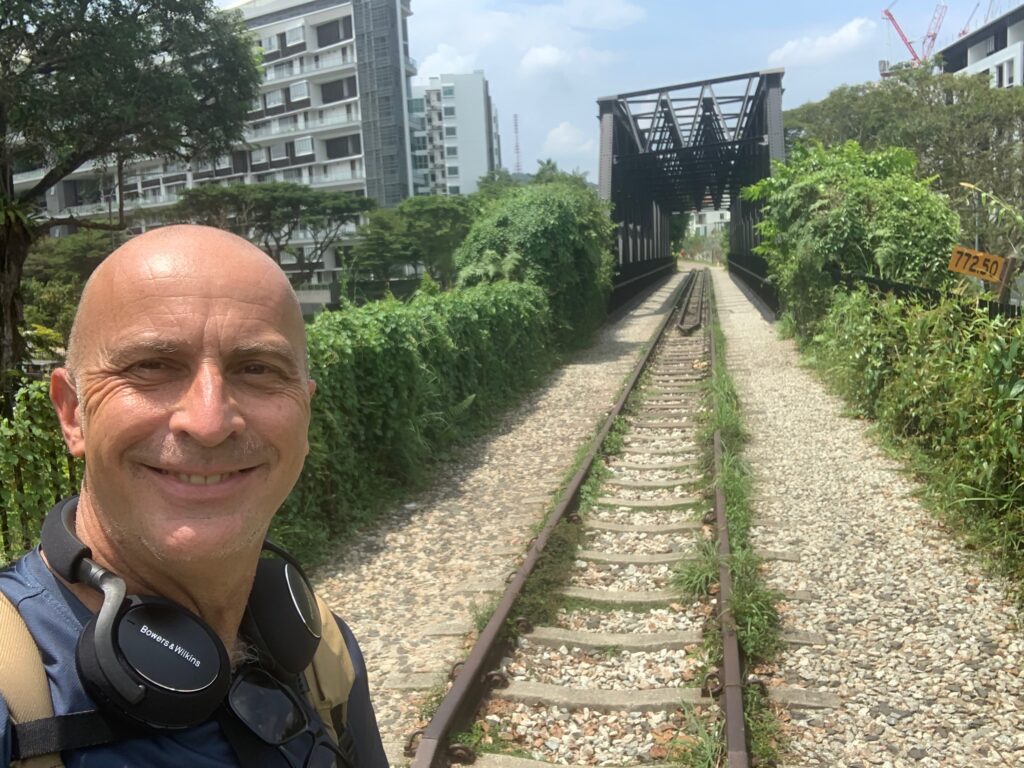
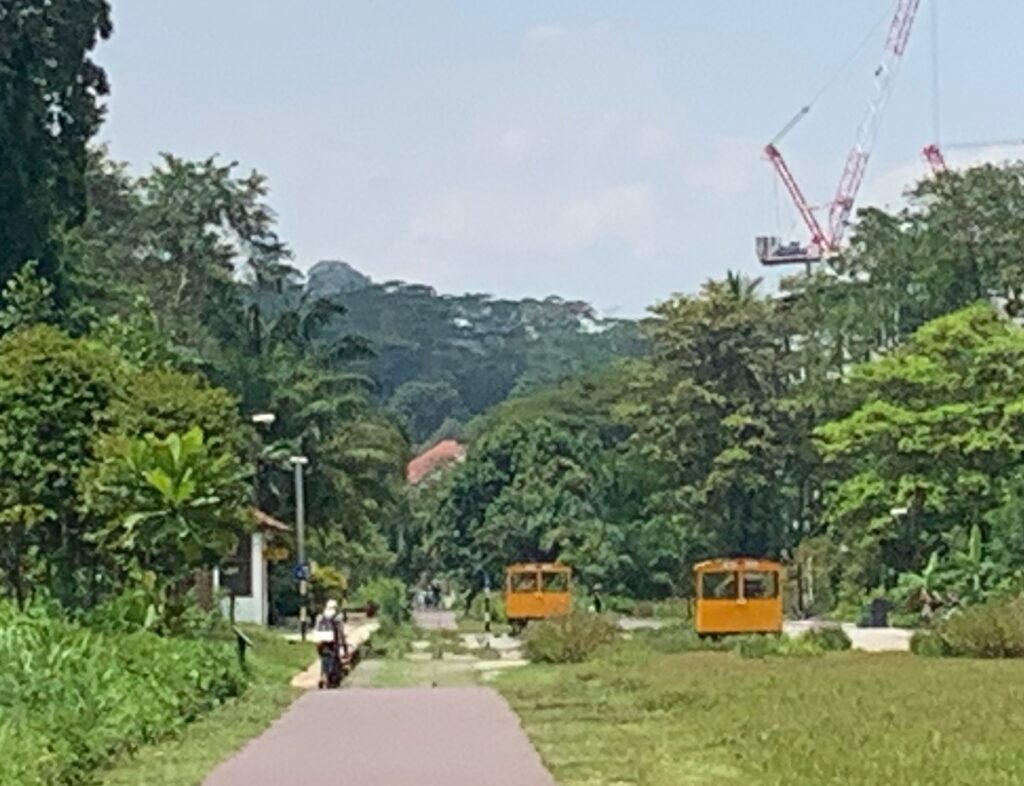
West Coast Line Services
- Woodlands to Johor Bahru Shuttle is a short diesel-powered service that connects Woodlands (Singapore) to Johor Bahru Sentral (Malaysia). In 2027, this service will be replaced by the modern, high-capacity Johor Bahru–Singapore Rapid Transit System (RTS) Link.
- Johor Bahru to Gemas Shuttle operated by diesel-powered trains with older carriages. One daily train also runs all the way to Tumpat on the East Coast Railway.
- Gemas to Padang Besas is fully electrified, with passenger services operated by KTM’s high-speed ETS (Electric Train Service)
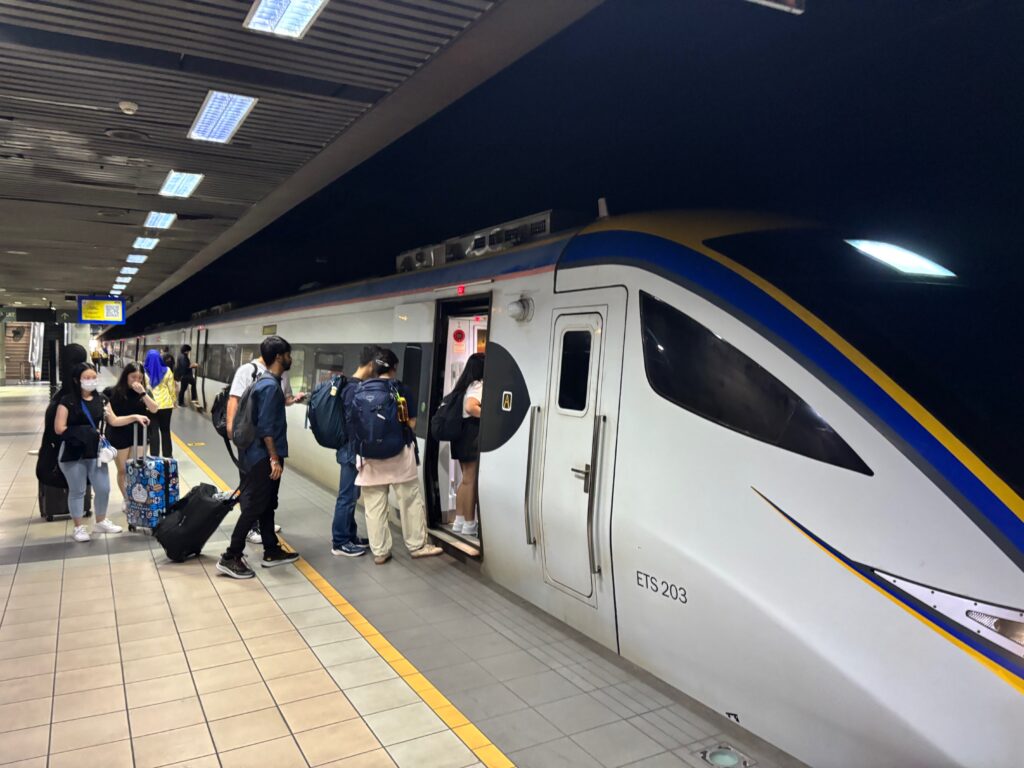
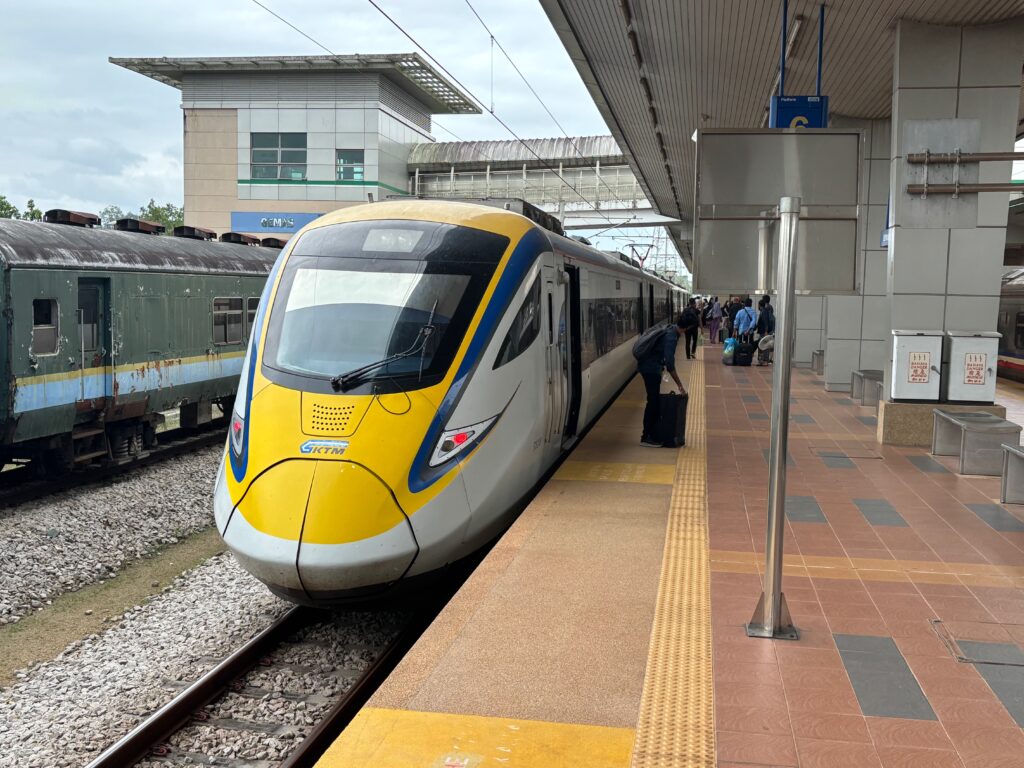
4. Butterworth to Bangkok are sometimes connected by KTM and State Railways of Thailand sleeper and seating trains, giving a faster cross-border connection
5. Eastern and Oriental Express (E&O) is a luxury train journey between Singapore and Bangkok, billed as a once-in-a-lifetime experience, offering fine dining, opulent cabins, and personalised service. The train stops for tours at key locations.
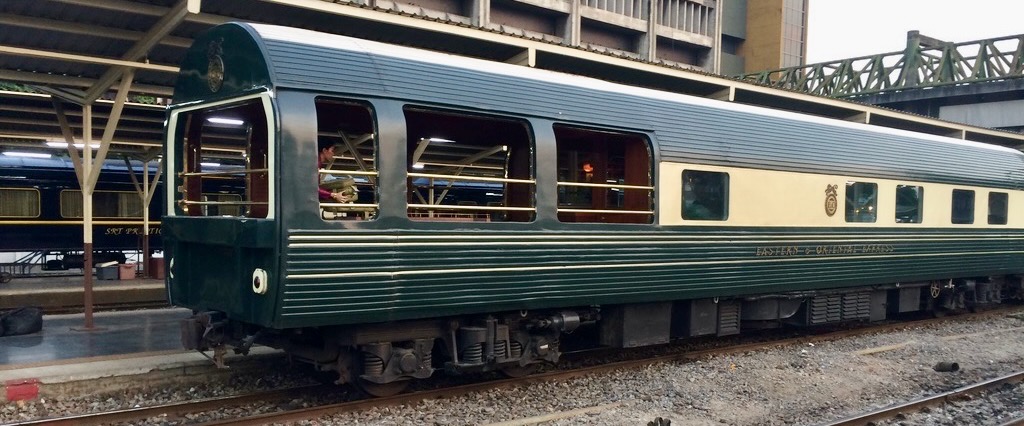
East Coast Line
The East Coast Line, the Jungle Line, is a more accurate name as it doesn’t run along any coast. Trains run from Gemas, (connects to the West Coast Line), to Tumpat, a station near the northeastern coast of Malaysia through lush tropical forests and scenic rivers, stopping at a series of small towns including Kuala Lipis: A beautiful historic town and former capital of Pahang and Wakaf Bharu: A key station for accessing Kota Bharu.
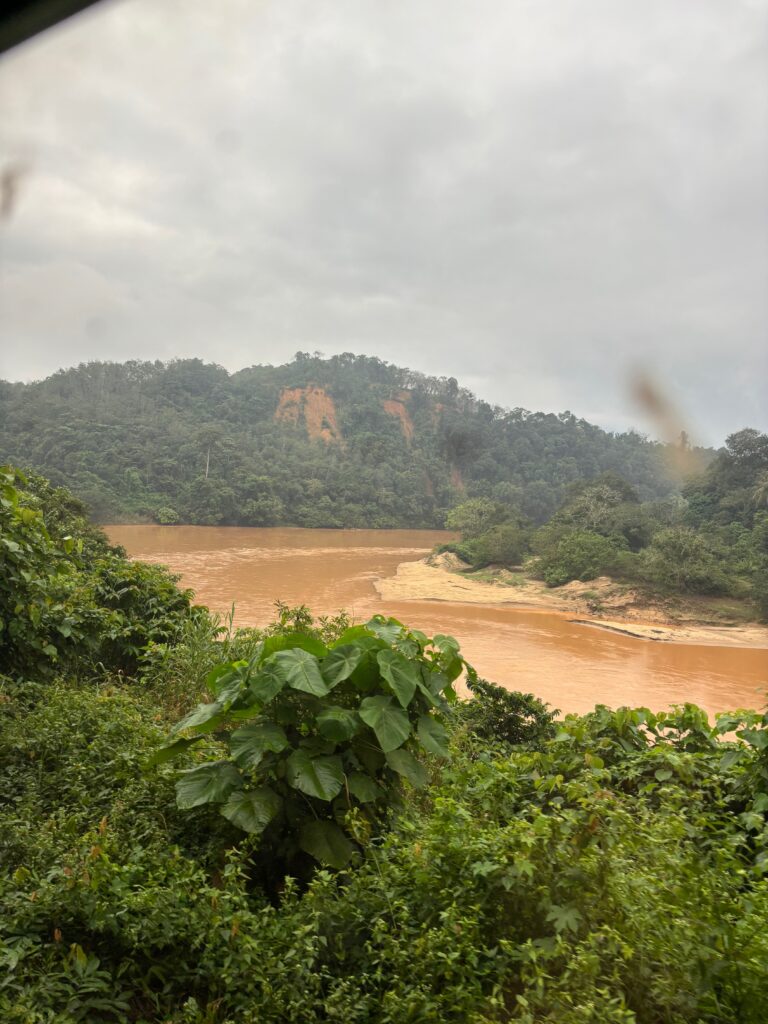
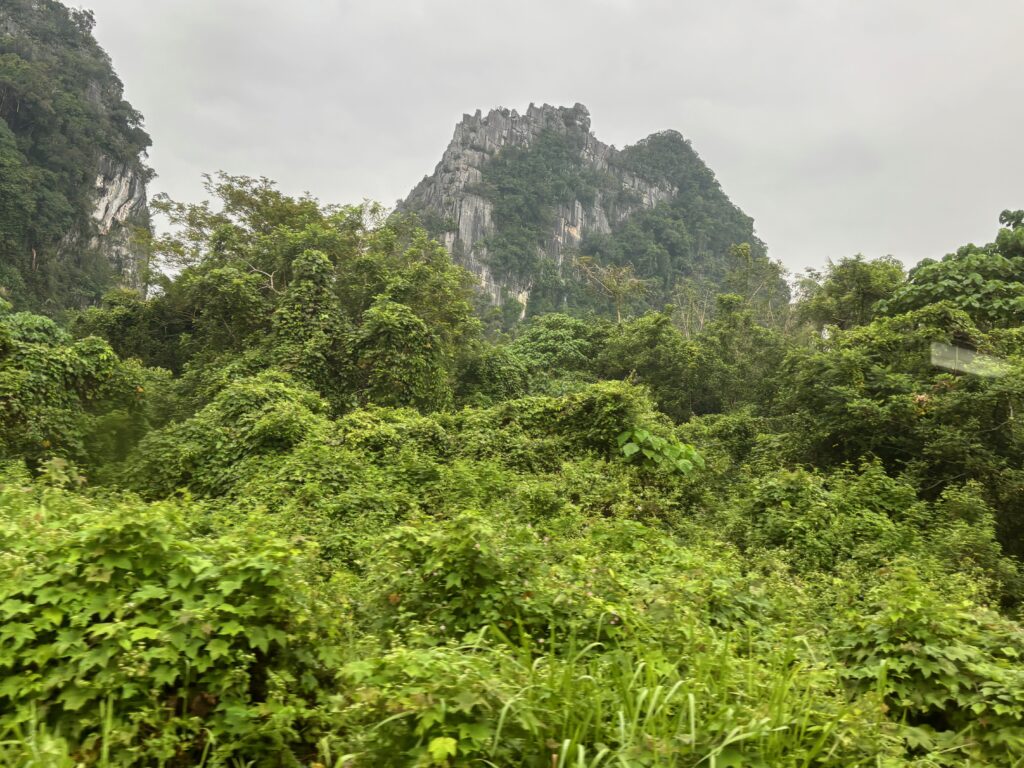
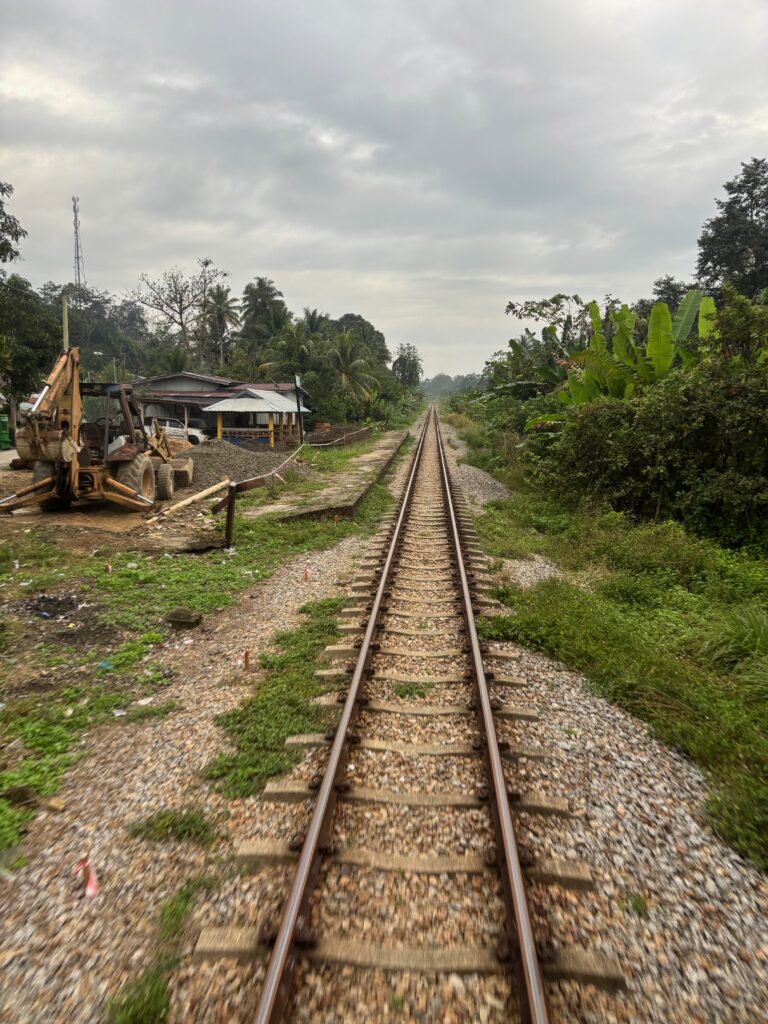
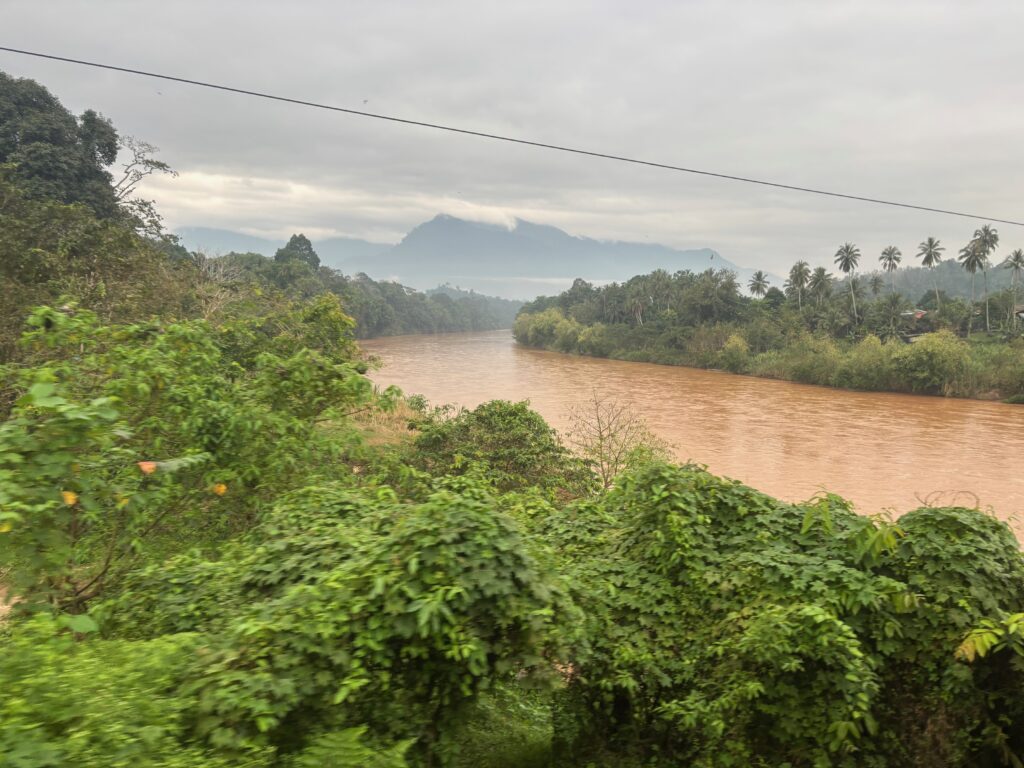
- Mentakab: Known for traditional markets and agriculture.
- Jerantut: The gateway to Taman Negara National Park.
- Kuala Lipis: A beautiful historic town and former capital of Pahang.
- Gua Musang: Famous for its limestone hills and caves.
- Pasir Mas: A bustling market town near the Thai border.
- Wakaf Bharu: A key station for accessing Kota Bharu.
Tomorrow, I will publish a trip report detailing my recent ride from Gemas to the end of the line at Tumpat, sharing this unique journey.
East Coast Line Services
Modern diesel-electric trains with locally built carriages, provide the majority of the services from Gemas to Tumpat. Trains departing from Gemas are timed to connect with West Coast Line services arriving from Padang Besar and Johor Bahru (JB).
An overnight locomotive-hauled train featuring older carriages, including sleeper cars, runs between Johor Bahru (JB) and Tumpat. This is the train most foreign tourists use.
KTM Tickets
KTM offers one of the most affordable rail travel options in the world! Tickets can be purchased :
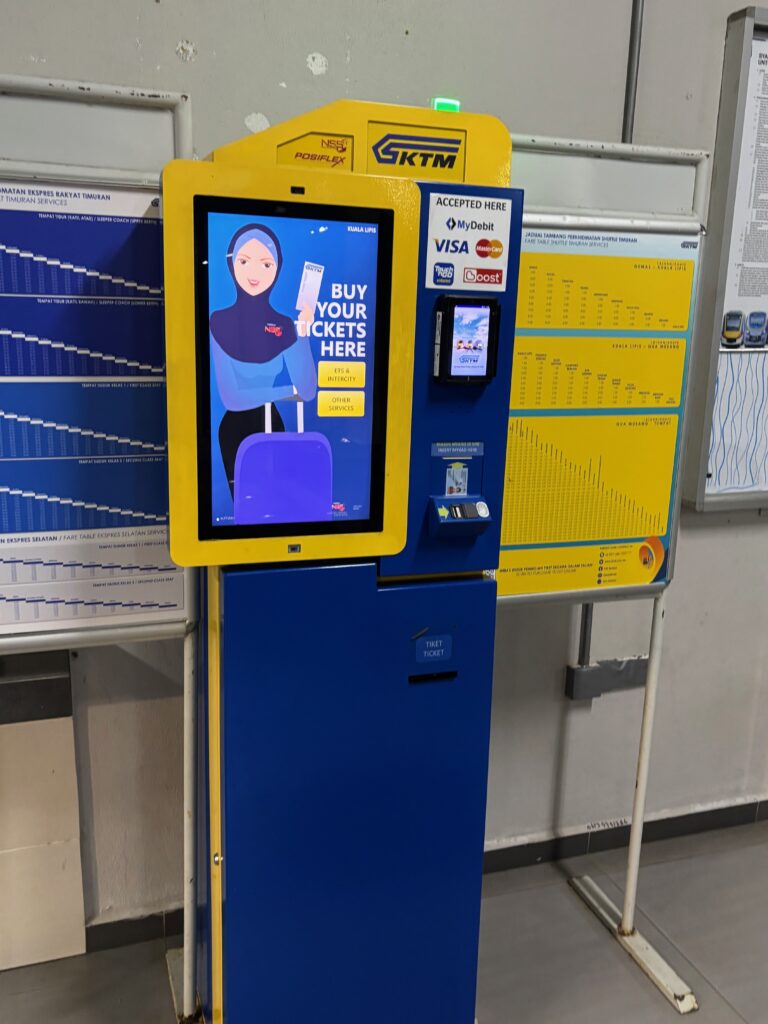
Online: Tickets can be booked through the KTM website or mobile app, making it easy for passengers to plan their journeys in advance. QR codes are provided for platform entry and ticket inspections. I used the app and found it brilliant.
Station Ticket Counters and Ticket Vending Machines: Tickets can also be purchased at station counters or from vending machines, offering travelers convenient options.
Onboard: At certain rural or unstaffed stations, passengers can buy tickets directly from train conductors.
Ticket Types:
ETS (Electric Train Service): The one-class trains come in three confirguartions:
a) Platinum: Fastest trains with the fewest stops
b) Gold: with fewer stops than Silver but more than Platinum.
c) Silver: The slowest service, with more stops to accommodate local or regional travel.
Other intercity and Komuter services have prices starting as low as RM 1 for shorter distances. A ticket from Johor Bahru to Tumpat on the overnight train, including a sleeper berth, can cost less than RM 50
Greater Kuala Lumpur Transport
Kuala Lumpur, Malaysia’s capital city, has an estimated population of approximately two million within its federal territory, spanning an area of 243 square kilometres (similar in size to Munich or Zurich). The larger metropolitan area, Greater Kuala Lumpur or the Klang Valley, encompasses surrounding suburbs and cities, bringing the total population to about 8.8 million. Malaysia’s urban and suburban rail systems are concentrated in the Klang Valley, the country’s economic and population hub, encompassing Kuala Lumpur and its surrounding areas.
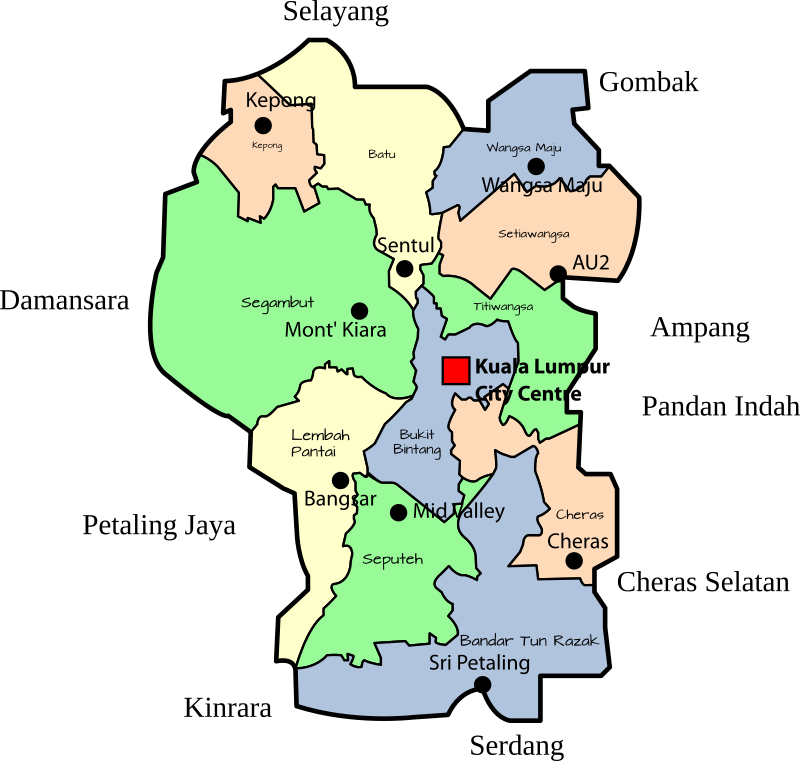
Modern urban transit development in Kuala Lumpur began in earnest in the 1990s and has since evolved into an extensive and integrated network. Today, the Klang Valley Integrated Transit System spans over 500 kilometres and carries around a million people daily:
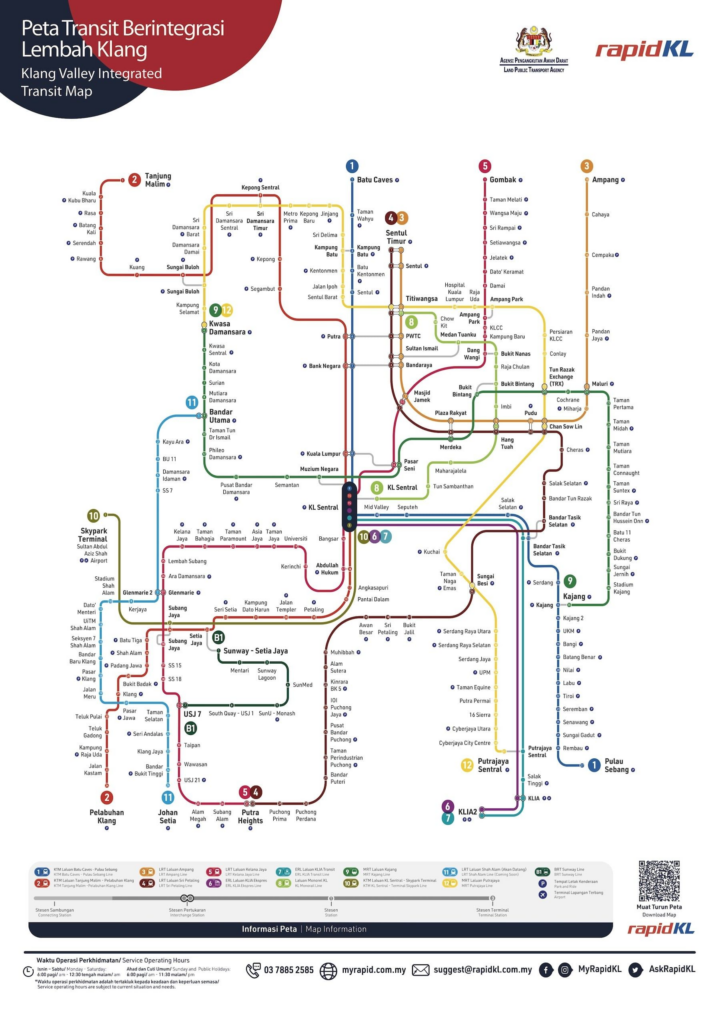
The system can feel overwhelming because they use multiple technologies across the valley but works well when you get the hang of it. The system is well patronised and safe.
KTM Komuter: Launched in 1995 and now encompasses four lines connecting suburban and intercity regions, catering to both daily commuters and longer-distance travelers.
LRT (Light Rail Transit): Made up of two lines that run along high-density corridors within Kuala Lumpur and Selangor.
MRT (Mass Rapid Transit): Modern, fully automated lines—the Sungai Buloh-Kajang Line (MRT1), which opened in 2017, and the newer Putrajaya Line (MRT2).
KL Monorail: Opened in 2003 and connects 11 stations.
KLIA Ekspres and KLIA Transit: Connect Kuala Lumpur International Airport (KLIA) to the city centre (KL Sentral) and surrounding areas.
Rapid KL Buses: The main public buses operating throughout the Klang Valley, providing feeder services to rail stations and trunk routes across the city.
GoKL City Bus: A free service operating colour-coded routes to connect key inner-city areas.
Sunway Bus Rapid Transit (BRT) Line: An elevated, dedicated bus corridor offering fast service within the Bandar Sunway area.
The centre of the system is KL Sentral where a majority of the systems interconnect:
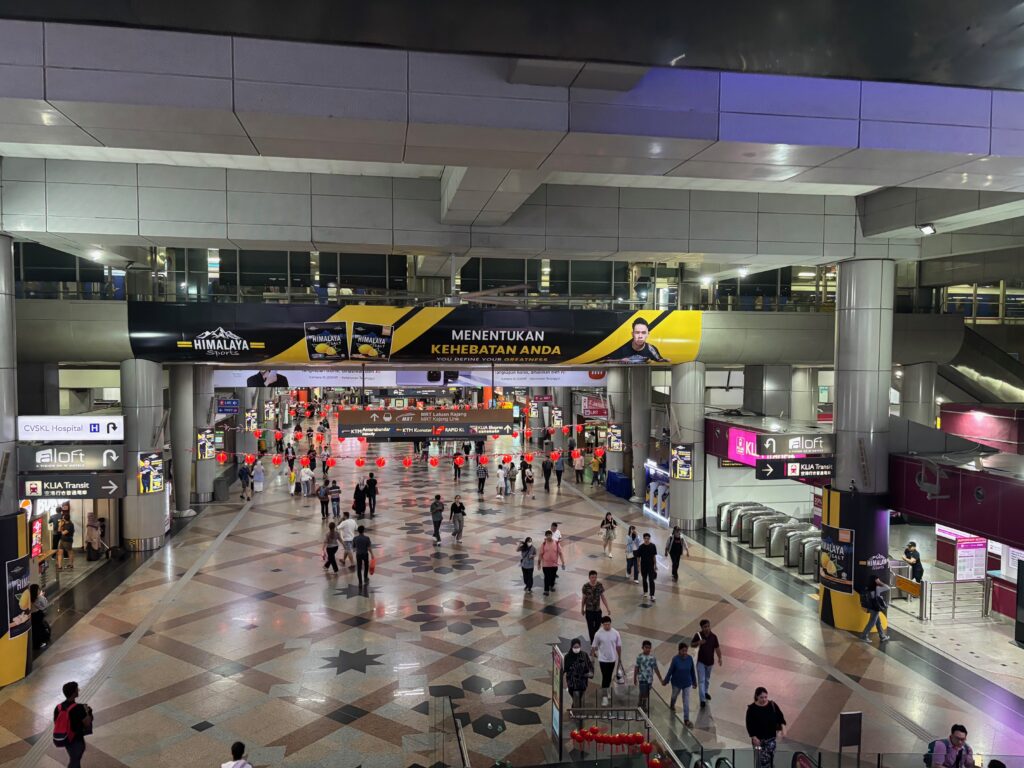
KL Ticketing System
To use Kuala Lumpur’s public transport system, locals primarily rely on the Touch ‘n Go card, a cashless payment method for buses, trains, and monorails, with fares automatically deducted. Cash payments are still accepted on buses and at train stations for occasional travellers. Digital wallets are expected to become universally integrated soon, allowing passengers to pay from GrabPay or Touch ‘n Go Wallet.
Have you explored KL and/or Malaysia by transit? How were your experiences? What other cities would you like to know how to get around?

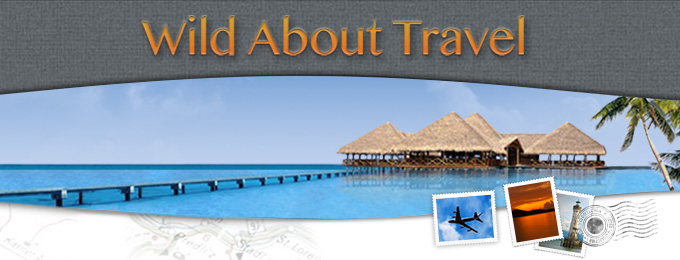
I’ve been to KL, KK, and Penang but haven’t seen anything beyond those and some excursions. I find this helpful and fascinating. I hadn’t given serious consideration to seeing more of Malaysia but reading about and seeing your experiences I’m rethinking my perspective. Thanks so much and keep it up please.